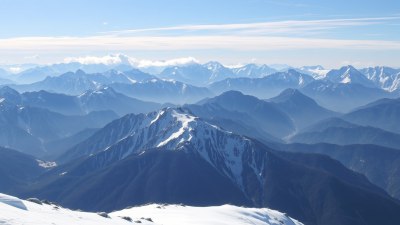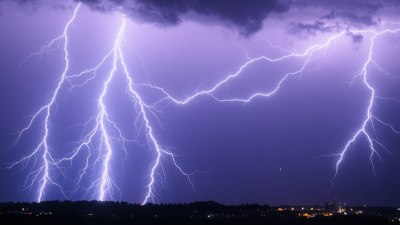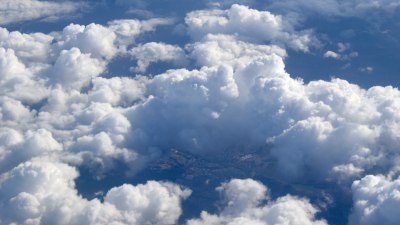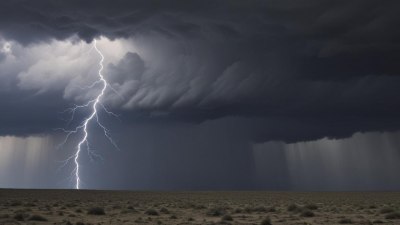How Weather Influences Mountain Avalanches
Explore the impact of weather conditions on mountain avalanches, their formation, and safety measures.
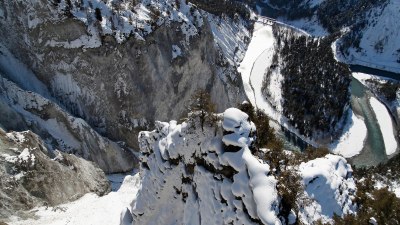
Mountain avalanches have long been associated with the perilous nature of winter sports and backcountry exploration. Avalanches can be triggered by a variety of factors, including weather conditions, snowpack stability, and human activity. Understanding how weather influences these destructive phenomena is crucial for safety and risk management in mountainous areas. In this article, we will explore the correlation between weather patterns and avalanche occurrences, analyze the different types of avalanches, and discuss preventive measures for enthusiasts and professionals alike.
Understanding Avalanches
An avalanche is a rapid flow of snow and ice down a slope. This movement can be deadly due to the overwhelming force and speed at which the snow travels. Avalanches primarily occur on slopes exceeding a 30-degree angle, where snow accumulates and can become unstable. There are several types of avalanches: slab avalanches, loose snow avalanches, and wet snow avalanches. Each type can be influenced by various weather factors.
Weather Patterns and Snowpack
Weather plays a critical role in the formation and stability of snowpacks, the layers of snow that accumulate on the mountainside. Temperature, precipitation, wind, and humidity are all significant factors that can alter the snowpack's characteristics. For instance, warm temperatures can cause melting, leading to a heavy, wet snow that can increase the likelihood of wet avalanches. Conversely, cold temperatures can create a hard, icy crust, making it difficult for new snow to bond properly to the surface, resulting in potential slab avalanches.
The Role of Temperature
Temperature fluctuations significantly affect avalanche risk. Rapid warming during the daytime can destabilize the snowpack, especially in the spring when the rising sun begins to melt the snow cover. Conversely, considerable cooling during the night can freeze layers of snow, creating a harsh surface that can lead to slab formation. This variability in temperatures is critical for avalanche forecasters who monitor mountain conditions.
Precipitation's Impact
Precipitation, such as rain and snowfall, can both positively and negatively influence avalanche conditions. Heavy snowfall can initially create unstable conditions as new snow adds weight to the existing snowpack. If significant snowfall accumulates rapidly, the lower layers may not be able to support the load, increasing the risk of an avalanche. Furthermore, rain can saturate the snowpack, leading to wet avalanches, especially when combined with warming temperatures.
Wind Effects
Wind is another essential factor influencing avalanches. Wind can transport snow and create uneven distribution across the mountain slope, forming cornices and loading specific areas known as wind slabs. When wind-driven snow builds up too heavily, it can fracture and slide as an avalanche. Additionally, wind can also erode existing snow, altering its stability. Avalanches can be triggered when skiers or snowboarders inadvertently disturb a wind slab during their descent.
Humidity and Its Role
Humidity is a less commonly discussed factor, but it can affect how the snow bonds and its overall stability. High humidity can lead to moist snow conditions, making it heavier and more prone to avalanche. Conversely, low humidity can result in drier powder snow, which may remain stable, but depending on how the snow was deposited, it could also produce dangerous conditions. Understanding the interplay between humidity and temperature is crucial for predicting avalanche potential.
Seasonal Variations
The seasons can drastically affect avalanche danger. In winter, the snowpack builds up and undergoes various transformations due to changing weather patterns. In spring, the warming temperatures and increased solar radiation can trigger numerous wet avalanches. Fall and summer may see remnants of avalanche debris and potential instabilities if snow is still present. Recognizing these seasonal patterns can aid mountaineers in planning their excursions more safely.
Avalanche Forecasting
Avalanche forecasting involves monitoring weather conditions, snowpack stability, and terrain to provide timely warnings about avalanche risks. Organizations like the American Avalanche Association (AAA) utilize data collected from weather stations, remote sensors, and on-the-ground observations to analyze risks for specific regions. This forecasting process is crucial for skiers, snowboarders, and mountaineers, enabling them to make informed decisions about their activities.
Educational Programs
Many regions with significant avalanche risk offer educational programs on avalanche safety and awareness. These programs often cover topics such as snow analysis, beacon training, and rescue techniques. Learning how to read snow conditions and weather patterns can significantly increase an individual's chances of staying safe while enjoying mountain activities.
Technological Advances in Avalanche Safety
Technology has advanced significantly, enhancing our understanding and safety in avalanche-prone areas. Devices such as avalanche transceivers, snow safety equipment, and early-warning systems have become essential tools for professionals and recreationalists alike. These technologies can detect buried victims, improve rescue times, and monitor real-time snow and weather conditions, making mountain adventures safer.
Weather conditions play a pivotal role in influencing mountain avalanches, creating dynamic and sometimes perilous environments for mountain enthusiasts. Through a thorough understanding of how temperature, precipitation, wind, and humidity interact within the snowpack, individuals can better navigate the risks associated with these natural phenomena. With appropriate education, tools, and awareness, the risk of avalanches can be managed, allowing for safer explorations in the backcountry.

